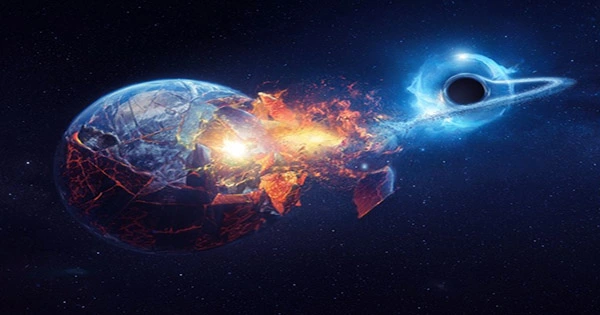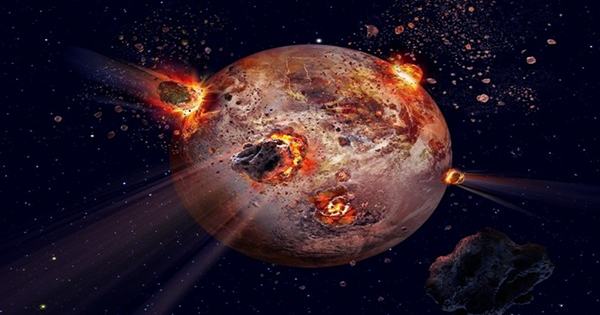A new study shows that the Martian subsurface would be a suitable area to hunt for probable present-day life on Mars, as NASA’s Perseverance rover continues its quest for ancient life on Mars’ surface.
The study, which was published in the journal Astrobiology, looked at the chemical composition of Martian meteorites pebbles that landed on Earth after being blasted from the surface of Mars.
According to the research, if those rocks were in constant touch with water, they would provide the chemical energy needed to support microbial communities identical to those found in the Earth’s darkest depths.
Because these meteorites could represent large expanses of the Martian crust, the findings suggest that much of the subsurface of Mars could be habitable.
“The big implication here for subsurface exploration science is that wherever you have groundwater on Mars, there’s a good chance that you have enough chemical energy to support subsurface microbial life,” said Jesse Tarnas, a postdoctoral researcher at NASA’s Jet Propulsion Laboratory who led the study while completing his Ph.D. at Brown University.
“We don’t know whether life ever got started beneath the surface of Mars, but if it did, we think there would be ample energy there to sustain it right up to today.”
Scientists have just discovered that Earth’s depths are home to a massive biome that is essentially isolated from the rest of the globe. Because they don’t have access to sunlight, these animals rely on the results of chemical processes that occur when rocks come into touch with water.
The subsurface is one of the frontiers in Mars exploration. We’ve investigated the atmosphere, mapped the surface with different wavelengths of light, and landed on the surface in half-a-dozen places, and that work continues to tell us so much about the planet’s past. But if we want to think about the possibility of present-day life, the subsurface is absolutely going to be where the action is.
Mustard
Radiolysis is a phenomenon that happens when radioactive elements in rocks react with water trapped in the pore and fracture space. Water molecules are broken down into their essential parts, hydrogen, and oxygen, in this reaction.
The hydrogen is dissolved in the remaining groundwater, and minerals such as pyrite (fool’s gold) absorb free oxygen to produce sulfate minerals. Microbes can use the dissolved hydrogen as fuel and “burn” it with the oxygen preserved in the sulfates.
These “sulfate-reducing” microorganisms have been discovered living more than a mile deep, in water that hasn’t seen the light of day in more than a billion years, in sites like Canada’s Kidd Creek Mine.
Tarnas has been collaborating with a team led by Brown University professor Jack Mustard and University of Toronto professor Barbara Sherwood Lollar to better understand these subsurface dwellings in the hopes of finding comparable habitats on Mars and elsewhere in the solar system. The project, called Earth 4-D: Subsurface Science and Exploration, is supported by the Canadian Institute for Advanced Research.
The goal of this new investigation was to discover if the elements for radiolysis-driven homes may be found on Mars. They used information from NASA’s Curiosity rover and other orbiting satellites, as well as compositional data from a collection of Martian meteorites that represent various regions of the planet’s crust.
The scientists were hunting for radioactive elements such as thorium, uranium, and potassium, as well as sulfide minerals that could be converted to sulfate and rock units with sufficient pore space to capture water.
All of the chemicals are present in sufficient quantities to maintain Earth-like ecosystems in several different types of Martian meteorites, according to the study. This was especially true for regolith breccias meteorites, which were discovered to have the best potential for life support and were originated from crustal rocks older than 3.6 billion years.
Unlike Earth, Mars does not have a plate tectonics mechanism that recycles crustal materials on a regular basis. As a result, these old landscapes have mostly remained untouched.
The findings, according to the researchers, support a mission to explore for clues of current-day life in the Martian subsurface. According to the researchers, the previous study has shown evidence of an active groundwater system on Mars in the past, and there is reason to assume that groundwater persists today.
One recent study, for example, suggested that an underground lake might exist beneath the planet’s southern ice cover. According to new findings, there is energy for life wherever there is groundwater.
While there are technical hurdles in deep exploration, Tarnas and Mustard say they aren’t as intractable as some may believe. A drilling operation wouldn’t require “a Texas-sized oil rig,” Mustard said, and recent advances in small drill probes could soon put the Martian depths within reach.
“The subsurface is one of the frontiers in Mars exploration,” Mustard said. “We’ve investigated the atmosphere, mapped the surface with different wavelengths of light, and landed on the surface in half-a-dozen places, and that work continues to tell us so much about the planet’s past. But if we want to think about the possibility of present-day life, the subsurface is absolutely going to be where the action is.”
The research was supported by the Canadian Institute for Advanced Research.
















